- Home
- Farley Mowat
The Boat Who Wouldn't Float Page 2
The Boat Who Wouldn't Float Read online
Page 2
He said he was delighted to hear I had bought the boat; but when he heard what I had paid for her, he was only able to cure his attack of apoplexy by drinking half the bottle of rum, neat.
“Lard livin’ Jasus!” he screeched when he got his breath back. “An’ I built her for they pirates fer two hunnert dollars!”
At which point I snatched the bottle from him and drank the other half of it, neat.
When we had recovered our breath I asked him if he would undertake repairs, modifications, and a general refit. He willingly agreed. We arranged that he would fit a false keel and outside ballast; a cabin trunk over the fish wells; bunks, tables, lockers, and other internal essentials; re-spar, re-rig her properly, and do a hundred other smaller but necessary jobs. Enos thought the work would take him about two months to complete.
I returned to St. John’s and thence to Ontario in moderately good spirits. I did not worry about the boat being ready on time, since we did not plan on sailing her until mid-summer. Occasionally I wrote to Enos (he himself could neither read nor write) and one or other of his strapping daughters would reply with a scrawled postcard of which this one is typical:
Dear Mister Mote
Dad say yor boat come fine lots fish this month Gert got her baby
Nellie Coffin
During the waiting months Jack and I dreamed many a dream and made many a plan. We agreed that I should precede him to Newfoundland near the end of June taking with me a jeep-load of gear and equipment, and that I would have the few finishing touches to the boat completed so that she would be ready to sail when Jack arrived in mid-July. After that, well, we would see. Bermuda, the Azores, Rio de Janeiro—the world lay waiting!
2. “Passion Flower” goes to sea
JACK MCCLELLAND was not the only man who owned a surrogate ship in which he could perform deeds of derring-do when life became unbearable. His little launch cum motor torpedo boat on Lake Muskoka was matched by a vessel I had owned for ten long years. To uninitiated eyes she seemed none other than a singularly decrepit jeep station wagon; but in the reality of imagination she was the last of the square-riggers trading between London and Ceylon.
To add authenticity to her assumed character she carried oil-burning running-lights, green to starboard, red to port, on the sides of her wheelhouse. On her bows she mounted a wench (seaman’s parlance for winch) with forty fathoms of cable. She had no figurehead but on bow and stern she carried her name, her port of registry, and her motto.
PASSION FLOWER
4th. Concession Of Albion Township
Do Or Die
Many is the time I have sailed her under a full press of canvas down the concession line to Highway 50, then south to pick up the trade winds, and so to the waterfront bars of Toronto. However she had never made a major voyage until the June morning when she and I set out for Newfoundland.
She was as well-prepared for that epochal journey as I could make her. In her capacious hold she carried two Admiralty-pattern anchors (one of 165 pounds and one of 100 pounds). There were three cases of ship’s biscuits packed in 1893. There were coils of cordage; bolts of sailcloth; cork life-preservers; a patent log; a compass with a ten-inch card and, as an auctioneer might have said, “other articles too numerous to mention”—which is, in fact, what the auctioneer had said on the April morning when I became his most avid customer.
Passion Flower took her departure from the sand-hills at dawn. A light mist lay over the Albion highlands and a brisk following breeze was waking in the west. It was a marvellous day to begin a great voyage.
For an old vessel she made an amazing passage that first day. With the help of the following breeze, she ran 650 miles of her easting down, and that night I moored her in a green pasture by the side of the St. Lawrence River just east of Quebec City.
I wakened the next morning to the smell of frying bacon. The sun was already up as were the horses in whose pasture I had bivouacked. Off to the north the great silver river rolled towards the still-distant sea, and to the south the horses formed a silent semi-circle around Passion Flower, me, and a stranger to my ken.
He was a small wrinkle-faced, scraggly-bearded fellow of indeterminate age dressed in worn serge trousers, a frayed shirt and a canvas jacket. I sat up in my sleeping-bag and stared at him in some astonishment for he was busily engaged in cooking breakfast on my gasoline stove, using my frying pan, my eggs, my bacon, and my coffee. He saw me move and glanced up.
“Mornin’ Sorr,” he said politely. “How do ye loik ye’re haigs?”
Evidently I had acquired a new crew member during the night. However I had not the vaguest memory of having done so and if my mind was actually giving way I was not prepared to admit it.
“Morning,” I replied cautiously. “Sunny side up and lightly done. Coffee black.”
“Aye, aye, Sorr. Comin’ up.”
The mystery solved itself as we were eating.
My new companion, whose name was Wilbur, explained that he was a Newfoundland seaman and that he had been on the road at dawn heading east toward St. John’s when he encountered Passion Flower. A casual glance through her windows alerted him to the fact that she was a ship disguised as a jeep and so, with the true camaraderie of sailors everywhere, he had welcomed himself aboard.
Wilbur was an acquisition. He had been at sea nearly forty years—or so he said. As we ran eastward that morning along the banks of the mighty river he pointed to many passing ships and told me stories of their crews; stories which, did I dare repeat them in print, would make Henry Miller sound like a purveyor of Victorian nursery rhymes.
Wilbur was a natural raconteur and he never stopped yarning as we crossed New Brunswick and entered Nova Scotia. By this time I had been ten hours at the wheel and I was weary. When Wilbur offered to take a trick, assuring me that there was not a vessel built he could not steer, I gladly handed over to him.
Gratefully I shut my eyes and slept. Ten minutes later Passion Flower brought up all standing with a crash that argued an end to the universe. Wilbur had taken us into a broadside collision with an enormous truck loaded down to her marks with pulpwood logs.
The damage to the two craft turned out to be negligible because Passion Flower’s sturdy bow winch had struck an immense tractor tire hanging like a fender over the port side of the truck. The damage to my psyche, to Wilbur’s pride, and to the temper of the large man who owned the truck, was not so slight; however this was Nova Scotia and we knew the cure. We sat down, the three of us, in the ditch at the roadside and drank a bottle of rum, after which we parted the best of friends. Both the truck driver and myself were content to accept Wilbur’s explanation of what had happened. Ruefully he confessed that while he could steer any vessel that had ever carried sail he had never really learned how to run a motor boat!
I took the wheel. Passion Flower now steered in a rather peculiar manner, tracking half-sideways like a crab. Since neither Wilbur nor I possessed much engineering knowledge we did not realize this was because her rudder (landsmen would call it a tie rod or something equally esoteric) was badly buckled. After an hour or two I got used to it but other vehicles approaching us on the road did not. They seemed somewhat uncertain as to our intended course, and not a few of them hauled off the fairway onto the gravel verge to let us pass.
At dusk we found that our electric headlights had also been put out of action by the collision, but since our oil-burning running-lights were trimmed and filled we lit them and were able to proceed, though at reduced speed.
And here I must remark that Nova Scotians, once a famous seafaring race, seem to have lost some of their heritage. At any rate most of the vessels we encountered after dark seemed to understand nothing of the rules of the sea-road. As we bore down upon them, our port lantern flaming red and the starboard flaming green, they sheered off as if they were encountering the Flying Dutchman. Some of them were so vocally distressed that I concluded we should anchor for the night, and this we did in the little village of Pugwa
sh.
Once nothing but a lobster-fishing community, Pugwash is now famous for its Thinkers Conferences to which great brains from all the world are welcomed by Cyrus Eaton, an American capitalist. I had heard about this man so I turned Passion Flower into the fairway leading to his estate. Mr. Eaton was not in residence, and despite some pretty broad hints from me, the secretary on duty showed no inclination to offer Wilbur and me the hospitality of the place. I lay this rebuff to the fact that I am no capitalist. Just being a thinker was evidently not enough.
We finally moored for the night in the front yard of a lobster fisherman named Angus Mackay, a charming man with a touch of Gaelic in his speech, who took us into his house where his wife fed us to repletion on fried mackerel. Angus also undertook to fix our headlights but the rudder proved beyond his competence.
The next day’s voyage was uneventful. Before noon we made Port Hawkesbury on Cape Breton Island where we sought out an old seagoing friend of mine, Harry Langley, from whom we acquired not only fifty fathom of anchor chain (the weight of which made Passion Flower squat down until her afterdeck was only inches above the road) but also a case of salt-water soap.
This soap had arrived from overseas in 1887 aboard H.M.S. Centurion. Centurion is now a rotting hulk lying at the bottom of Sydney harbour but her soap is of more lasting stuff than mere English oak and Swedish iron. Harry assured me I would find no more durable soap anywhere; and he was right. A decade after acquiring that case I am still on the first bar and it may well be another ten years before it softens up to the point where it produces its first lather.
Late that evening we reached North Sydney on the northeast tip of Cape Breton, from which port a car ferry sails over the Cabot Strait to Newfoundland lying ninety miles away across some of the roughest water in the world.
Here I must interrupt the log of Passion Flower’s voyage to intrude a few words about the great island which was to become so much a part of my life in the months and years ahead. I shall not attempt a new description of it, for one already exists; one which I doubt can be surpassed. I unblushingly plagiarize it. It is from a book called This Rock Within the Sea by John de Visser and Farley Mowat.
Newfoundland is of the sea. Poised like a mighty granite stopper over the bell-mouth of the Gulf of St. Lawrence, it turns its back upon the greater continent, barricading itself behind the three-hundred-mile-long mountain rampart which forms its hostile western coast. Its other coasts all face towards the open sea, and are so slashed and convoluted with bays, inlets, runs and fiords that they offer more than five thousand miles of shoreline to the sweep of the Atlantic. Everywhere the hidden reefs and rocks (which are called, with dreadful explicitness, “sunkers”) wait to rip the bellies of unwary vessels. Nevertheless these coasts are a true seaman’s world, for the harbours and havens they offer are numberless.
Until a few generations ago the coasts of the island were all that really mattered. The high, rolling plateau of the interior, darkly coniferous-wooded to the north but bone-bare to the south, remained an almost unknown hinterland. Newfoundland was then, and it remains, a true sea-province, perhaps akin to that other lost sea-province called Atlantis; but Newfoundland, instead of sinking into the green depths, was somehow blown adrift to fetch up against our shores, there to remain in unwilling exile, always straining back towards the east. Nor is this pure fantasy, for Newfoundland is the most easterly land in North America, jutting so far out into the Atlantic that its capital, St. John’s, lies six hundred miles to the east of Halifax and almost twelve hundred miles east of New York.
Mowat’s prose may be a little overblown, but essentially his description stands.
The voyage across the Cabot Strait was Passion Flower’s first encounter with salt water. Shortly before midnight I drove her aboard a huge, slab-sided, unseaworthy monstrosity called William Carson, which the Canadian government built to ply the Strait and so link Newfoundland to the rest of the nation. This thing (in truth she cannot be called a vessel) is about as kindly as an old goat with a sore udder; and just about as beautiful. In her swollen belly she carries several hundred cars and trucks, and on this particular evening she was filled to capacity. Each vehicle was secured to mooring rings welded to her decks; although “secured” is perhaps not the word that one should use.
We sailed at midnight. By 0200 hours the Carson was wallowing in a heavy beam sea and heaving her great flanks over under the weight of a fifty-mile-an-hour nor’west gale. Her human passengers clung to whatever supports they could find, or rolled about in their bunks moaning an obbligato to the high squeal of the wind. Down below in the vehicle hold all hell broke loose.
The so-called seaman who had made Passion Flower fast to the deck must have been a farm boy from Saskatoon, Saskatchewan. Otherwise he would have realized that while four lengths of quarter-inch wire may be enough to moor the insubstantial shell that is your standard North American car, such moorings would be as pack thread to a two-ton jeep, laden with about three tons of assorted ironmongery.
Passion Flower came adrift. At first, so closely were the cars packed, she did not have much room to manoeuvre. But after half an hour she had managed to clear a little space for herself. Each time the Carson dropped her heavy snout into a trough, my Flower took a run forward to bring up against the stern of a Pontiac owned by a U.S. Air Force captain stationed at Stephenville, Newfoundland. Each time the Carson lifted her bows and sagged heavily back on her fat buttocks, Passion Flower charged astern, and rammed her towing hook into the grill of a Cadillac belonging to one of the industrial entrepreneurs who were then beginning to make Newfoundland their happy hunting ground at the invitation of Premier Joey Smallwood.
Having somewhat foreshortened these two cars, Passion Flower developed enough elbow-room to snap their moorings, and then the three of them began charging back and forth together. The chain reaction that followed turned the lower vehicle deck into a shambles that may not have been matched since Claudius Tiberius arranged for three hundred elephants to be stampeded in the Coliseum by forty Nubian lions.
The unloading process at the point of arrival, Port aux Basques, was lively and interesting. The comments of drivers, as they descended to the dock to claim their mutilated vehicles and to arrange for tow trucks, were robust and hearty.
Although she looked as if she had been on ice-breaking duty for several months, Passion Flower drove off the ferry under her own power. Apparently she had suffered no serious internal injuries. She was, as Wilbur pointed out with no little awe, “still good fer it!”
The five-hundred-and-fifty mile voyage across the centre of Newfoundland was a prolonged exercise in masochism. In those days the Trans-Canada Highway was still a dream existing mainly in the minds of politicians in Ottawa and in St. John’s. The reality was so dreadful that nothing but a jeep or an army tank—or a dromedary—could have coped with it. Very few travellers had the temerity to try. Most of them chose to have their vehicles loaded on flat cars at Port aux Basques and shipped by rail to St. John’s. I might have done the same had not Wilbur assured me that he had driven the road “t’ousands of toimes,” and that there was nothing to it.
He was right. There was nothing to it-nothing that could have been called a road. It took us five days to reach St. John’s and by then Passion Flower was on her last legs. She had blown seven tires; had lost her few remaining springs (her shock absorbers had been absent for years); her muffler; her tail pipe; and her confidence. She staggered into St. John’s an old and ailing vessel; but, by God, she got there on her own.
Wilbur left me in St. John’s. I asked him where he wished to be put ashore and he directed me to a grey mass of buildings on the city’s outskirts. The place looked indescribably gloomy and forbidding.
“Are you sure,” I asked, “this is the place you want?”
“Yiss, me son,” Wilbur replied happily. “Dat’s t’Mental. Dat’s t’very place where I belongs!”
It was, too. They met Wilbur at the door and th
ey were as glad to see him as he was to see them. One of them, an intern, I believe, told me about it.
He said Wilbur had been an inmate of the St. John’s Mental Hospital for going on twenty years. He never made any trouble; but every now and again he would escape and take a “viyage.” In his mind’s eye he too was a sailor who sailed the seven seas; but after a few months away he would grow lonely and then he would come home.
Wilbur shook my hand heartily and thanked me kindly.
“Any toime ye needs a mate, ye just calls on me, Skipper!” were his parting words.
And maybe I will; for I have been shipmates with many men I have liked a good deal less.
3. The sea-green bride
ALTHOUGH I am very fond of Newfoundland, St. John’s is not one of my favourite cities. There is nothing wrong with the physical nature of the place; it is old, pleasantly decrepit, sprawling on steep slopes overlooking a marvellous harbour. Nor do I have any antipathy toward the majority of its people, particularly those who work the vessels at the waterfront, or who, in defiance of the fact that this is a capital city, continue to live and fish as true outporters in a community of straggling houses stuck to the cliffs along the Narrows—the entrance to the harbour.
My dislike of St. John’s stems from the fact that it is a parasite. Through at least three centuries it has been a leech squatting behind its high rock portals, sucking the life-blood of the outport people in order to engorge itself. In the early 1960’s it still had more millionaires per capita than any other city in North America, including Dallas, Texas. These fortunes were made by remorselessly bleeding the outport fishermen who, until Newfoundland joined Canadian Confederation in 1949, were exploited by the St. John’s merchants in a mediaeval fashion. The merchants, whose great warehouses and counting-houses lined Water Street, were called, in helpless bitterness, the “Water Street Pirates.” They were the targets for a passive but enduring hatred which they countered by developing a bleak contempt for the people. Totally oriented toward England, they spoke with English accents, sent their children to England to be educated, and were Newfoundlanders in name alone.

 Owls in the Family
Owls in the Family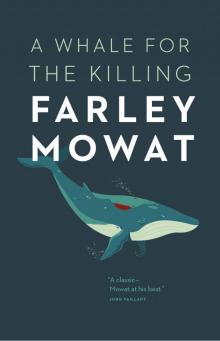 A Whale for the Killing
A Whale for the Killing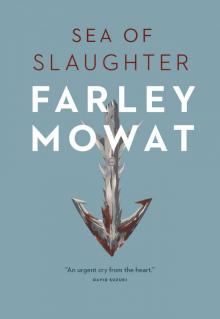 Sea of Slaughter
Sea of Slaughter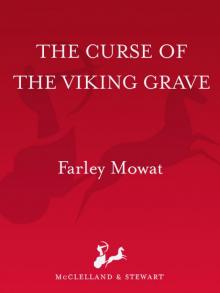 The Curse of the Viking Grave
The Curse of the Viking Grave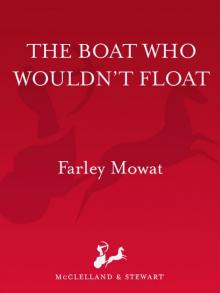 The Boat Who Wouldn't Float
The Boat Who Wouldn't Float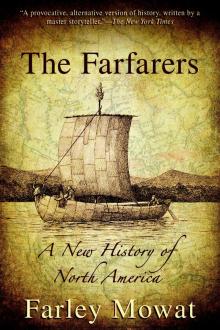 The Farfarers: Before the Norse
The Farfarers: Before the Norse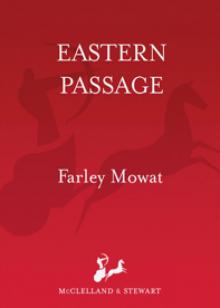 Memoir
Memoir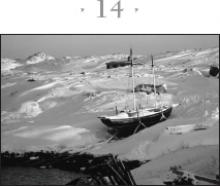 Bay of Spirits: A Love Story
Bay of Spirits: A Love Story The Black Joke
The Black Joke Sibir: My Discovery of Siberia
Sibir: My Discovery of Siberia The Dog Who Wouldn't Be
The Dog Who Wouldn't Be Never Cry Wolf
Never Cry Wolf And No Birds Sang
And No Birds Sang The Snow Walker
The Snow Walker Born Naked: The Early Adventures of the Author of Never Cry Wolf
Born Naked: The Early Adventures of the Author of Never Cry Wolf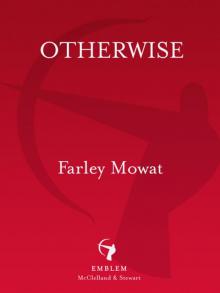 Otherwise
Otherwise Lost in the Barrens
Lost in the Barrens Gorillas in the Mist
Gorillas in the Mist People of the Deer
People of the Deer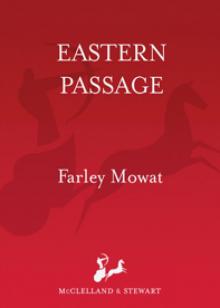 Eastern Passage
Eastern Passage Sibir
Sibir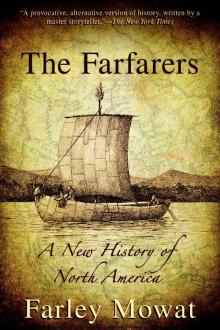 The Farfarers
The Farfarers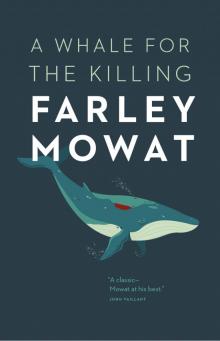 A Whale For The Killing (v5.0)
A Whale For The Killing (v5.0)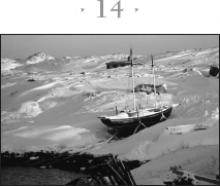 Bay of Spirits
Bay of Spirits And No Birds Sang (v5.0)
And No Birds Sang (v5.0) Born Naked
Born Naked